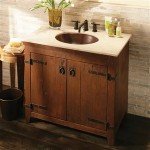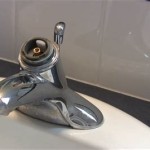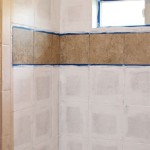How To Tile Around a Bathroom Vanity
Tiling around a bathroom vanity presents a practical and aesthetically pleasing solution for protecting walls and floors from water damage and enhancing the overall look of the bathroom. This process, while requiring precision and attention to detail, is achievable for the moderately experienced DIY enthusiast. The following guide outlines the essential steps, materials, and techniques for a successful tiling project around a bathroom vanity.
Before commencing any tiling project, meticulous planning and preparation are paramount. This phase involves accurate measurements, material selection, and surface preparation to ensure a long-lasting and visually appealing result. Rushing this stage can lead to costly errors and necessitate rework.
Key Point 1: Planning and Preparation
The initial step involves taking precise measurements of the area surrounding the vanity that will be tiled. This includes the height and width of the backsplash area, as well as any floor space around the vanity's base. These measurements will determine the quantity of tiles needed and allow for accurate layout planning. It is advisable to purchase approximately 10% extra tiles to account for cuts, breakage, and future repairs.
Selecting the appropriate type of tile is crucial. Consider factors such as water resistance, slip resistance (particularly for floor tiles), and overall aesthetic appeal. Common choices include ceramic, porcelain, and natural stone tiles. Ceramic tiles are generally more affordable and suitable for walls, while porcelain tiles are denser and more durable, making them ideal for floors and areas exposed to moisture. Natural stone tiles offer a luxurious look but require more maintenance and sealing.
Gather all necessary tools and materials before starting the project. Essential tools include a tile saw (wet saw for precise cuts), a notched trowel, a rubber grout float, a grout sponge, a level, a measuring tape, a pencil, safety glasses, and work gloves. Materials required are the chosen tiles, tile adhesive (mortar), grout, tile spacers, sealant (for natural stone tiles), and a clean cloth.
Proper surface preparation is critical for ensuring adequate adhesion of the tiles. Clean the surfaces to be tiled thoroughly, removing any dirt, dust, grease, or loose paint. Repair any cracks or imperfections in the wall or floor using patching compound and allow it to dry completely. Consider applying a primer to the surface to improve adhesion and prevent moisture absorption. For areas prone to water exposure, such as the backsplash behind the sink, applying a waterproof membrane is highly recommended.
Dry-fitting the tiles before applying adhesive is a crucial step in planning the layout. This involves arranging the tiles in the intended pattern without any adhesive to visualize the final result and identify any potential issues with tile alignment or placement. Pay close attention to the placement of full tiles and cuts, aiming for symmetrical cuts where possible. This ensures a balanced and visually appealing outcome. Use tile spacers to maintain consistent grout lines between tiles. Mark the positions of tiles and cuts on the surface using a pencil.
Key Point 2: Tile Installation
Once the planning phase is complete, the actual tile installation can begin. Prepare the tile adhesive according to the manufacturer's instructions. Mix the mortar thoroughly to achieve a smooth, consistent consistency. Avoid adding too much water, as this can weaken the adhesive and compromise its bonding strength.
Using the notched trowel, apply a layer of adhesive to the surface, covering a manageable area at a time. The size of the notched trowel will depend on the size and type of tile being used. Hold the trowel at a 45-degree angle and create consistent ridges in the adhesive. This ensures proper coverage and allows air to escape when the tile is pressed into place.
Carefully position each tile onto the adhesive, pressing it firmly and slightly twisting it to ensure good contact. Use tile spacers to maintain consistent grout lines between tiles. Periodically check the level of the tiles using a level and make adjustments as needed. Remove any excess adhesive from the tile surfaces with a damp sponge.
When cutting tiles to fit around the vanity, plumbing fixtures, or corners, use a wet saw for clean, precise cuts. Measure the required cut carefully and mark it on the tile using a pencil. Guide the tile slowly through the saw blade, applying consistent pressure to avoid chipping or cracking. For small, intricate cuts, consider using tile nippers or a specialized cutting tool.
Allow the adhesive to dry completely according to the manufacturer's instructions before proceeding to the next step. This typically takes 24 to 48 hours. Avoid walking on or disturbing the tiles during this period, as this can disrupt their alignment and compromise the bond with the adhesive.
Remove the tile spacers once the adhesive has dried completely. Inspect the tiled surface for any imperfections or gaps. If necessary, use a small amount of adhesive to fill any gaps or secure any loose tiles. Allow the adhesive to dry completely before proceeding to the grouting stage.
Key Point 3: Grouting and Finishing
The grouting process involves filling the gaps between the tiles with grout, creating a waterproof and aesthetically pleasing finish. Select a grout color that complements the tile color and the overall bathroom decor. Prepare the grout according to the manufacturer's instructions, mixing it thoroughly to achieve a smooth, consistent consistency.
Using the rubber grout float, apply the grout to the tile surface, working it into the grout lines at a 45-degree angle. Apply firm pressure to ensure that the grout fills the gaps completely. Remove any excess grout from the tile surfaces with the grout float.
After allowing the grout to set for approximately 15 to 30 minutes, use a damp grout sponge to clean the tile surfaces. Wring out the sponge frequently and wipe the tiles in a circular motion to remove the excess grout. Be careful not to remove too much grout from the grout lines.
Rinse the grout sponge frequently with clean water and continue wiping the tile surfaces until they are clean and free of grout residue. Pay particular attention to the corners and edges of the tiled area, as these areas tend to accumulate more grout residue.
Allow the grout to dry completely according to the manufacturer's instructions. This typically takes 24 to 48 hours. Once the grout has dried, a haze may appear on the tile surfaces. This haze can be removed with a clean, dry cloth or a grout haze remover.
Apply a sealant to the grout lines to protect them from stains and water damage. This is particularly important in areas exposed to moisture, such as the backsplash behind the sink. Allow the sealant to dry completely according to the manufacturer's instructions.
Finally, apply a bead of caulk along the edges of the tiled area where it meets the vanity, countertop, or other surfaces. This creates a waterproof seal and prevents water from seeping behind the tiles. Smooth the caulk with a wet finger or a caulking tool to create a neat, professional finish.
Clean all tools and materials thoroughly after completing the tiling project. Dispose of any leftover adhesive, grout, and tile scraps properly. Inspect the finished tiled area for any imperfections or areas that require touch-up. With proper planning, preparation, and execution, tiling around a bathroom vanity can significantly enhance the functionality and aesthetic appeal of the bathroom.

Bathroom Design Getting Tile Around The Vanity Right

Bathroom Design Getting Tile Around The Vanity Right

Tutorial How To Install A Bathroom Vanity The Diy Playbook

Bathroom Design Getting Tile Around The Vanity Right

Tiled Bathroom Vanity Remodel Decor Countertops
Backsplash Advice For Your Bathroom Would You Tile The Side Walls Too Designed

Updating A Vanity With Custom Tile Backsplash The Kim Six Fix

How To Install A Glass Tile Vanity Top Diy

62 Bathroom Backsplash Ideas For A Stylish Makeover Remodel Tile Vanity

Master Bathroom Vanity Makeover Centsational Style
Related Posts







